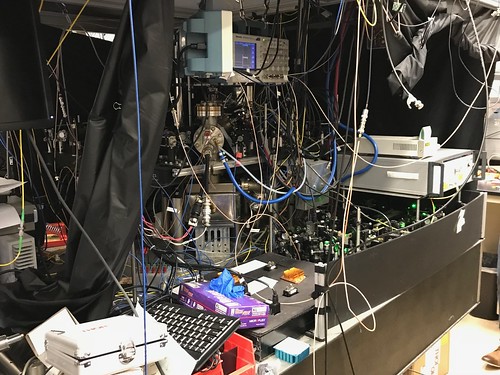Read a terrific popsci article this morning in Physics Today on time keeping: "Time Too Good To Be True" [Daniel Kleppner, Physics Today, 59.3, 2006-03-01]. (Disclaimer: it's from 2006, so it's likely to be out of date.)
The gist of the article is that as we make more and more precise atomic clocks by using higher and higher frequency resonators (like transitioning from cesium atomic clocks that resonate in the microwave range to elements that resonate in the optical range), in some ways they become less and less useful. Eventually we will create (or perhaps y bnow have created) clocks whose frequencies are so high that they are effected by extremely small perturbations in gravity, like tidal effects from the Sun and the Moon. Or perhaps, I wonder, as clocks get more sensitive, even smaller gravitational effects, like a black hole and a neutron star colliding 900 million light years away (which has in fact been detected).
Even today, the cesium and rubidium atomic clocks in GPS satellites have to be adjusted for special (due to the centripetal acceleration of their orbits) and general (orbital altitudes over the center of mass of the Earth) relativistic effects, where, in round numbers, an error of one nanosecond throws the ranging measurement for a single satellite off by about a foot.
(This is an NTP server I built for my home network that incorporates a chip-scale cesium atomic clock disciplined to GPS; everyone needs a stratum-0 clock of their own. Also shown: my lab assistant.)
With far more accurate/precise atomic clocks, we won't be able to compare them. Note that relativistic effects aren't just jitter issues, they affect the fundamental nature of time itself, so it's not just a measurement or equipment issue.
(This is a photograph I took in 2018 of part of an experimental ytterbium lattice optical atomic clock at the NIST laboratories in Boulder Colorado.)
One of the problems with optical atomic clocks is that to compare two of them in two locations we have to account for differences in altitude as little as one centimeter; that's how precise these clocks are, and how sensitive they are to general relativistic effects. We simply don't have, and probably can't have, a way to measure altitudes from the center of mass of the Earth that accurately. One of the ways we measure the shape of the "geoid" of the Earth is to (you knew this was coming) compare synchronized/syntonized atomic clocks. So there's definitely a chicken and egg problem.



No comments:
Post a Comment